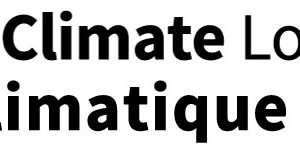
The Paris Climate Agreement: Get the Carbon Pricing Right After nearly two decades of international negotiations, The Paris Agreement formally adopted on Saturday, December 12, 2015 set into motion an ambitious global process of accelerated action to avoid catastrophic changes in our global climate. Happily Canada is back on track after receiving a Lifetime Unachievement Award for climate inaction in 2013. Canada’s delegation in Paris included most of our Premiers, our Prime Minister, Opposition leaders and Indigenous leadership. Our Environment Minister, Catherine McKenna, was invited to negotiate the final details of the Paris Agreement. The most promising aspect of the global agreement is found in Article 2: “to pursue efforts to limit the temperature increase to 1.5 degrees C above preindustrial levels”. Four facts must kept in mind though: Fortunately though we now can hold our government to their promise of 1.5 C and therefore have a mechanism to limit government approvals for new fossil infrastructure such as pipelines and fracked-gas wells. A huge business opportunity awaits. Early adapters will be the businesses that have clear policies from their government. A transparent and predictable national carbon pricing policy is a key element to transitioning to a prosperous clean tech future. On Monday, November 30, the Government of Canada joined a UN global coalition of partners called the Carbon Pricing Leadership Coalition— a new policy-design framework where governments, intergovernmental organizations, nongovernmental organizations, and businesses, including some of the world’s largest oil companies and institutional investors, work together as peers. Their mission is to build effective, efficient, equitable carbon pricing into all national climate strategies by 2020. Citizens’ Climate Lobby is also a partner in the Carbon Pricing Leadership Coalition. Canada went to Paris with deeply inadequate commitments. PM Trudeau has promised to meet with the premiers within the next 90 days. There is a hodgepodge of provincial carbon pricing policies, including carbon taxes (BC, Alberta and possibly New Brunswick) and cap and trade (Quebec, Ontario and now Manitoba) that must be woven together. In Paris Canada committed to stand up for Indigenous Rights. Thus, it must be noted the following was stated by the International Indigenous Environmental Network in Paris regarding cap and trade: “The Paris accord is a trade agreement, nothing more. It promises to privatize, commodify and sell forested lands as carbon offsets in fraudulent schemes such as REDD+ projects. These offset schemes provide a financial laundering mechanism for developed countries to launder their carbon pollution on the backs of the global south.” – Alberto Saldamando, Human Rights Expert & Attorney. In conclusion, when viewed through the lenses of international cooperation and historic moments, December 12, 2015 was an auspicious day for the climate. When viewed from the lenses of scientific rigour, political will and real deeds, it is clear we have a lot of work ahead of us. What is needed in Canada is a national rising fee on CO2 that is integrated with provincial carbon pricing mechanisms, coupled with rebates to households and tariffs on imports. This will provide the economic incentive to drive the emissions reductions needed to ward off catastrophic climate change while stimulating the economy. Carbon fee and dividend is that policy. Contact: Cathy Orlando, National Manager, Citizens’ Climate Lobby Canada, cathy@citizensclimatelobby.org











